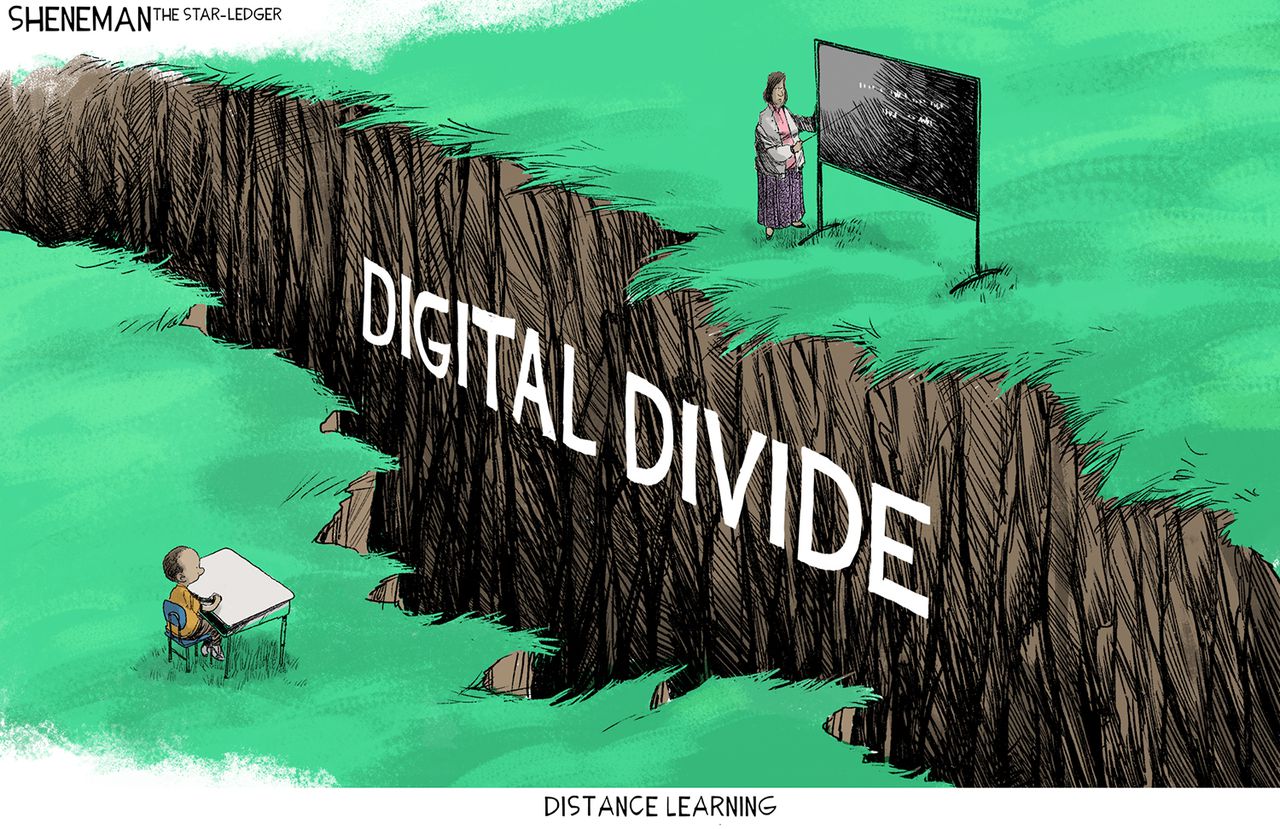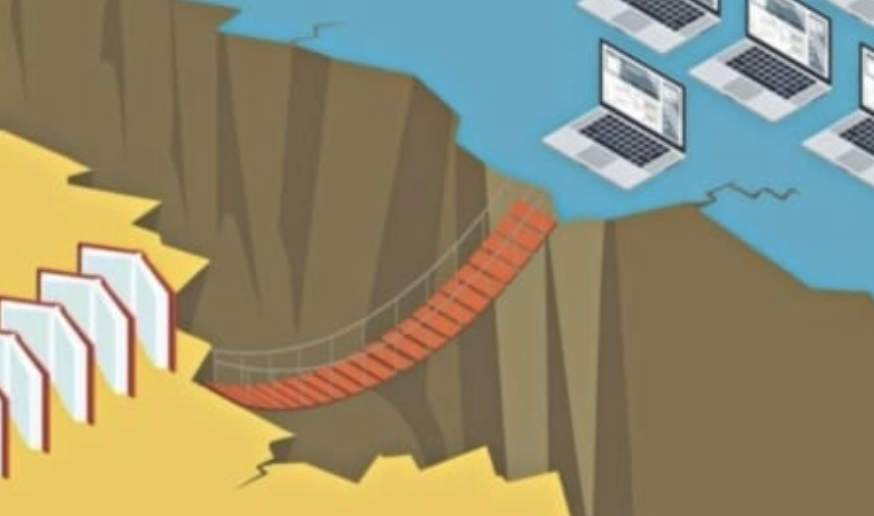Big Idea 5.2 Digital Divide
This tech talk discusses the benefits and harmful effects of computing
- Digital Divide
- Deals with “To Have and Have Not” in relation to Computers, Internet, or Technology in general.
- Contributing factors to divide are socioeconomic (money), geographic (location), demographic (education, nationality, religion, and ethnicity)
- At the start of pandemic 90,000 school children in New Jersey did not have access to computers capable of distance learning.
- In education equity requires school to provide materials like Computers or Chrome books. Here is some counter thinking.
- Blog Post Reflection – Digital Empowerment
Digital Divide
Deals with “To Have and Have Not” in relation to Computers, Internet, or Technology in general.
- Poorer or rural areas in America and other countries may have less or little access to Technology
- Some countries may have different or restricted access, for instance China and USA may have divide in service allowed in their countries.
Contributing factors to divide are socioeconomic (money), geographic (location), demographic (education, nationality, religion, and ethnicity)
- Individual may have less access to latest updates, thus may be working on older generations of computers
- Religious groups like the Amish choose not to use technology
- San Diego county has regional distinction in many categories between Northern and Southern population, usually indicated by Interstate 8.
- Sunnyvale CA has been know as technology hub of influence for the entirety of the United States.
At the start of pandemic 90,000 school children in New Jersey did not have access to computers capable of distance learning.

In education equity requires school to provide materials like Computers or Chrome books. Here is some counter thinking.
- In our environment, Del Norte CS preference is that you have your own computer so that you can work away from school.
- In our classroom, internet blockers at router and lack of admin password can make school computer less productive than personally owned computer.
- Education is often concerned about cyberbullying, sexting, or student privacy. What do you think of investments being made in protection versus investments being made in technology education? Are digital fears expanding digital divide?

Blog Post Reflection – Digital Empowerment
- How does someone empower themself in a digital world?
- Someone can empower themself in a digital world by developing digital literacy skills, managing personal information and privacy, staying informed about technology trends, creating a positive online presence, being mindful of the information consumed and shared, taking advantage of security tools, and engaging in online communities that align with personal values and interests.
- How does someone that is empowered help someone that is not empowered? Describe something you could do at Del Norte HS.
- Empowering others can be done through various actions, such as providing support, resources, education, and opportunities. One example at Del Norte could be mentorship program, where an empowered student could work with a student who is not feeling as empowered, providing guidance, encouragement, and helping them to develop skills and confidence.
- Is paper or red tape blocking digital empowerment? Are there such barriers at Del Norte? Elsewhere?
- Answer with an opinion and learnings so far this year: What are pros/cons on internet blockers at router and lack of admin password on lab machines at school?
- Pros:
- Make sure students stay on task during school
- Makes sure students stay safe online
- Cons:
- Not all unmanaged sites are bad, some are even necessary for school
- Can limit creative exploration and research potential
- Pros:
- What concerns do you have personally about the digital divide? For yourself or for others.
- Living in a privileged community means we don’t experience major digital divide issues, but there are still some minor ones, such as the preference for Windows over Macbooks or IOS over Android, however these are minor.